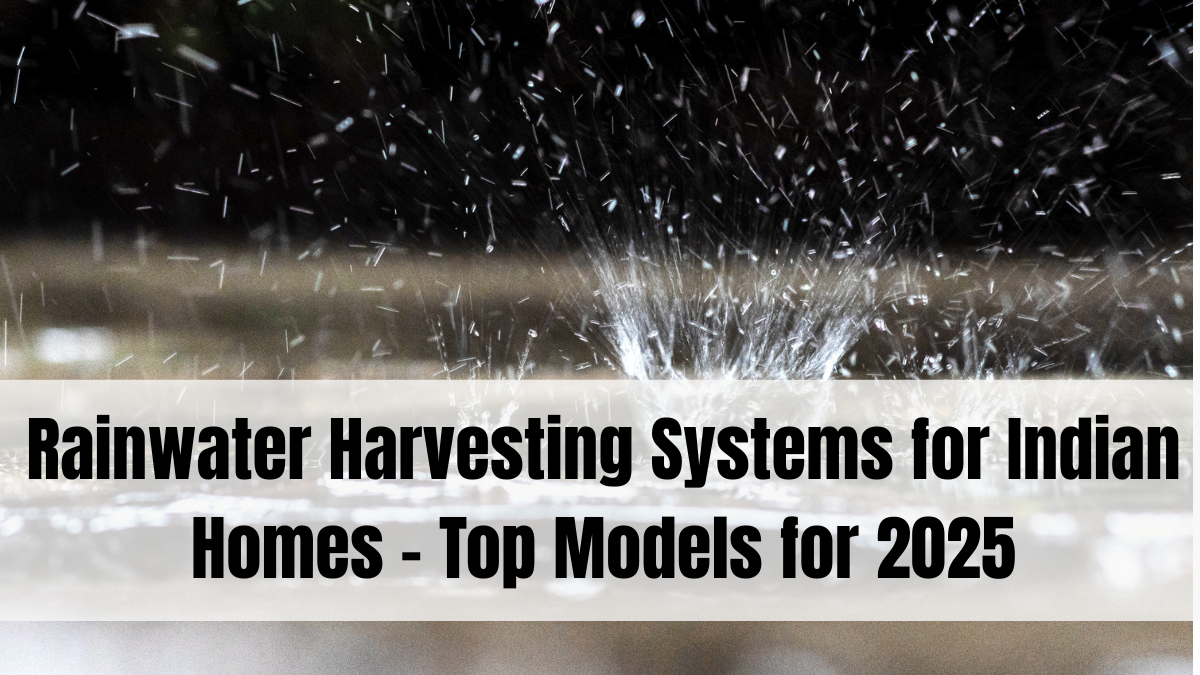Water scarcity is a pressing concern across many parts of India, and as environmental awareness grows, rainwater harvesting India 2025 is becoming an essential practice for urban and rural households alike. By capturing and storing rainwater, homes can reduce dependency on municipal supplies, lower water bills, and contribute to groundwater recharge — all while promoting eco-friendly living.
In 2025, advances in technology and government incentives are making rainwater harvesting systems more accessible, efficient, and affordable than ever before.

Why Rainwater Harvesting Matters for Indian Homes
India’s seasonal monsoon rains provide a natural source of water that, if properly captured, can meet a significant portion of household and garden needs. Benefits of rainwater harvesting include:
-
Conservation: Reduces pressure on groundwater and municipal water systems.
-
Cost Savings: Cuts down water bills by supplementing daily water use.
-
Improved Water Quality: Rainwater is naturally soft and free from many pollutants found in groundwater.
-
Flood Mitigation: Helps reduce runoff and waterlogging during heavy rains.
-
Sustainability: Encourages responsible water use and supports environmental health.
For many Indian homes, adopting rainwater harvesting is a smart and responsible choice.
Popular Rainwater Harvesting Systems in 2025
Several types of rainwater harvesting systems suit different budgets and home sizes:
-
Rooftop Harvesting: Collects rainwater from roof surfaces into storage tanks — the most common and cost-effective system.
-
Surface Runoff Harvesting: Captures water from paved areas and gardens to recharge underground aquifers.
-
Recharge Wells: Channels rainwater into bore wells or pits to replenish groundwater directly.
-
Rain Gardens: Landscape features designed to absorb and filter rainwater for groundwater recharge.
Many Indian homeowners combine multiple methods to maximize benefits.
Top Rainwater Harvesting Models for Indian Homes
In 2025, leading rainwater harvesting solutions focus on ease of installation, maintenance, and water quality:
-
Pre-fabricated Storage Tanks: Made from food-grade plastic or ferrocement, these tanks come in modular sizes.
-
First-Flush Diverters: Devices that prevent initial dirty rainwater from entering storage tanks, ensuring cleaner water collection.
-
Filtration Units: Multi-stage filters remove debris, sediments, and contaminants before water storage or recharge.
-
Smart Sensors: IoT-enabled sensors monitor tank levels and water quality, sending alerts via mobile apps.
Brands like Tata BlueScope, Prince Water, and local startups offer popular, trusted products tailored for Indian conditions.
Government Initiatives Supporting Rainwater Harvesting
The Indian government has rolled out several schemes to encourage rainwater harvesting adoption:
-
Subsidies and rebates for installing systems in urban and rural homes.
-
Mandates for rainwater harvesting in new residential and commercial buildings.
-
Awareness campaigns emphasizing water conservation and sustainability.
-
Technical support and training programs at local municipal levels.
These initiatives lower the entry barrier and drive widespread implementation.
Installation and Maintenance Tips
To ensure your rainwater harvesting system works effectively:
-
Regularly clean gutters and catchment areas to prevent blockages.
-
Inspect and maintain filters and first-flush systems to keep water clean.
-
Protect storage tanks from sunlight to avoid algae growth.
-
Use collected rainwater primarily for gardening, washing, and flushing to minimize contamination risks.
Professional installation and periodic check-ups help maximize system lifespan and performance.
FAQs
What is rainwater harvesting?
It’s the process of collecting and storing rainwater for reuse in homes, gardens, or groundwater recharge.
How much can Indian homes save with rainwater harvesting?
Savings vary but can reduce water bills by 30% or more depending on system size and water usage.
Are rainwater harvesting systems expensive?
Costs have decreased with new technologies and government subsidies, making systems affordable for many households.
Can harvested rainwater be used for drinking?
Usually, rainwater is used for non-potable purposes unless properly treated to meet drinking water standards.
Does rainwater harvesting help in drought-prone areas?
Yes, it provides an alternative water source and helps replenish groundwater, which is critical during droughts.
Click here to know more.
